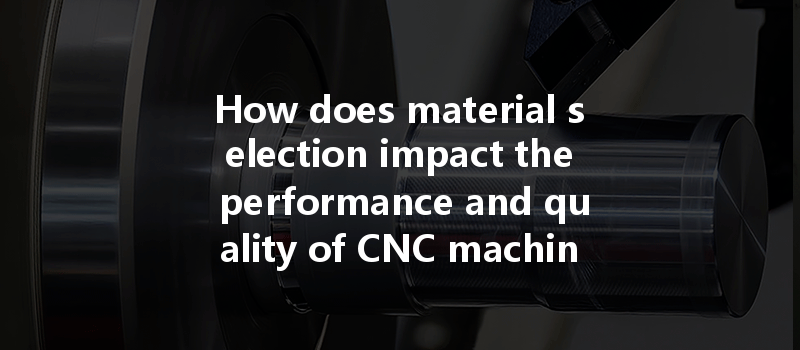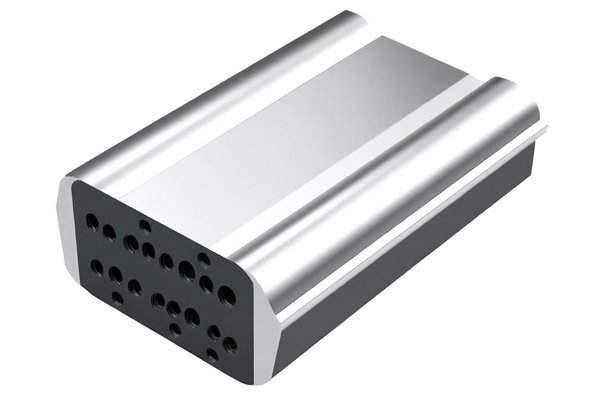: The Unsung Hero of Manufacturing
Did you know that the choice of materials can account for up to 75% of the total cost of a manufacturing project? This staggering statistic illustrates just how crucial material selection is in industries relying heavily on machining technologies, like CNC (Computer Numerical Control) machining. Considering the intricate interplay between material properties and machining processes, manufacturers can’t afford to overlook this aspect. The right material not only ensures a product meets quality and performance standards—minimizing defects and maximizing usability—but also has a substantial impact on machining efficiency and costs. In this blog, we will dive deeper into how material selection influences the performance and quality of CNC machined products, along with strategies for optimal choices.
Understanding CNC Machining
Before we delve into material selection, it’s essential to understand what CNC machining is. CNC machining involves the use of computer-controlled machines to automate the production of parts and components from various materials. This technology allows for high precision, repeatability, and the ability to produce complex geometries that would be challenging with traditional machining methods. However, the effectiveness of CNC machining is intimately tied to the materials used.
The Importance of Material Selection
The mechanical properties of a material, such as tensile strength, hardness, ductility, and impact resistance, play a crucial role in determining its performance in various applications. For example, choosing a material with high tensile strength and ductility is vital for parts that will experience high loads and deformation during operation.
For instance, aluminum alloys (like 6061 and 7075) are popular in aerospace applications due to their combination of strength, weight, and ease of machining. In contrast, materials like titanium are favored for their strength-to-weight ratio, particularly in high-performance applications, despite being more challenging to machine.
Thermal conductivity and expansion can significantly affect machining accuracy. With excessive heat generated during machining, materials like plastics may soften or warp while metals can experience thermal expansion that could lead to dimensional inaccuracies.
In high-temperature environments, such as jets or performance vehicles, selecting a material with robust thermal properties—like superalloys—can make all the difference.
In industries like automotive, aerospace, and marine, components are often exposed to corrosive environments. The choice of a material must take into consideration its long-term durability in the application environment.
Selecting the right material can avert costly failures and increases the lifespan of the component significantly.
The material selection process must balance performance characteristics with budget constraints. Some high-performing materials may come at a premium cost, which can inflate project budgets. Analyzing the cost-to-performance ratio is essential in determining whether a specific material is justifiable.

The complexity of CNC machining varies significantly between materials. Understanding a material’s machinability is vital for ensuring the efficiency of the machining process.
Evaluating a material’s machinability can save time and enhance production efficiency.
Strategies for Optimal Material Selection
Clear identification of the product’s intended use is paramount. By analyzing service conditions, loads, temperature ranges, corrosive environments, and required tolerances, manufacturers can shortlist potential materials.
Material datasheets provide detailed property information, including mechanical, thermal, and hardness characteristics. Understanding these properties is essential for effective selection and matching with project requirements.
Before finalizing material choices, creating prototypes can validate performance, machining processes, and identify potential challenges. This real-world testing can significantly alter material decisions based on observed results.
Consulting with material scientists or industry experts can further refine material choices. The insights gained can avoid pitfalls that may arise from a lack of experience or knowledge in material properties.
A thorough analysis comparing the lifecycle costs, performance, and potential failures can reveal much about material viability for the intended application.
: The Key Takeaway
The selection of materials is not merely an afterthought in the CNC machining process; it is a fundamental step that dictates the performance, quality, and overall success of the manufactured product. With mechanical properties, thermal stability, corrosion resistance, cost considerations, and manufacturability all playing pivotal roles, manufacturers must approach material selection with a strategic mindset.
By mastering the art of material selection, manufacturers can produce high-quality components tailored to meet specific performance requirements, while also minimizing costs and ensuring efficiency in production.
This blog serves as a reminder of the integral role that comprehensive material understanding plays in modern CNC machining. Every choice made is an investment in the future reliability and performance of the final product. As the industry continues to evolve with advancements in materials and machining technologies, revisiting and refining material selection processes will remain vital to achieving exceptional results.
It’s essential to ask yourself: Is your hierarchy of priorities aligned with the most optimized material selection strategies for your machining projects? The answer could define your success in today’s competitive manufacturing landscape.






